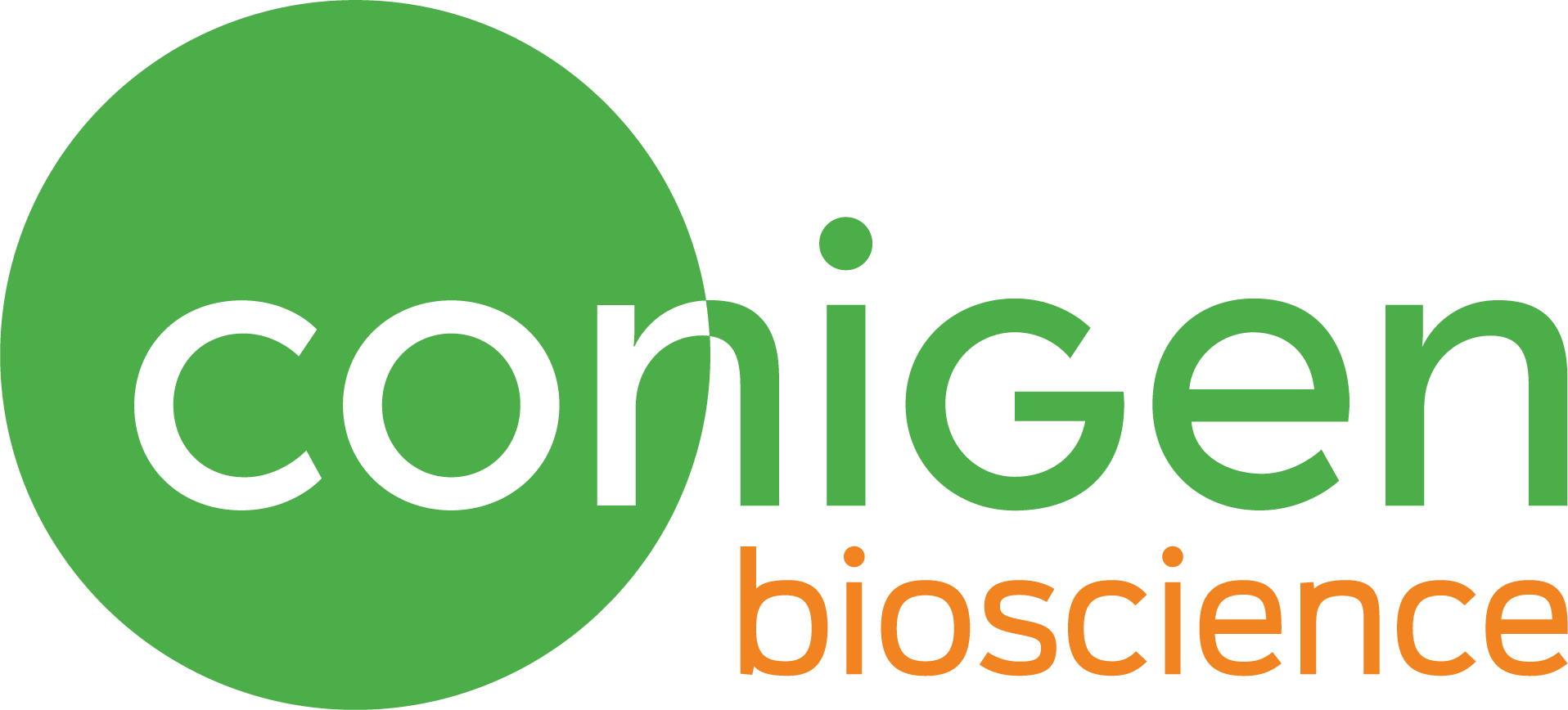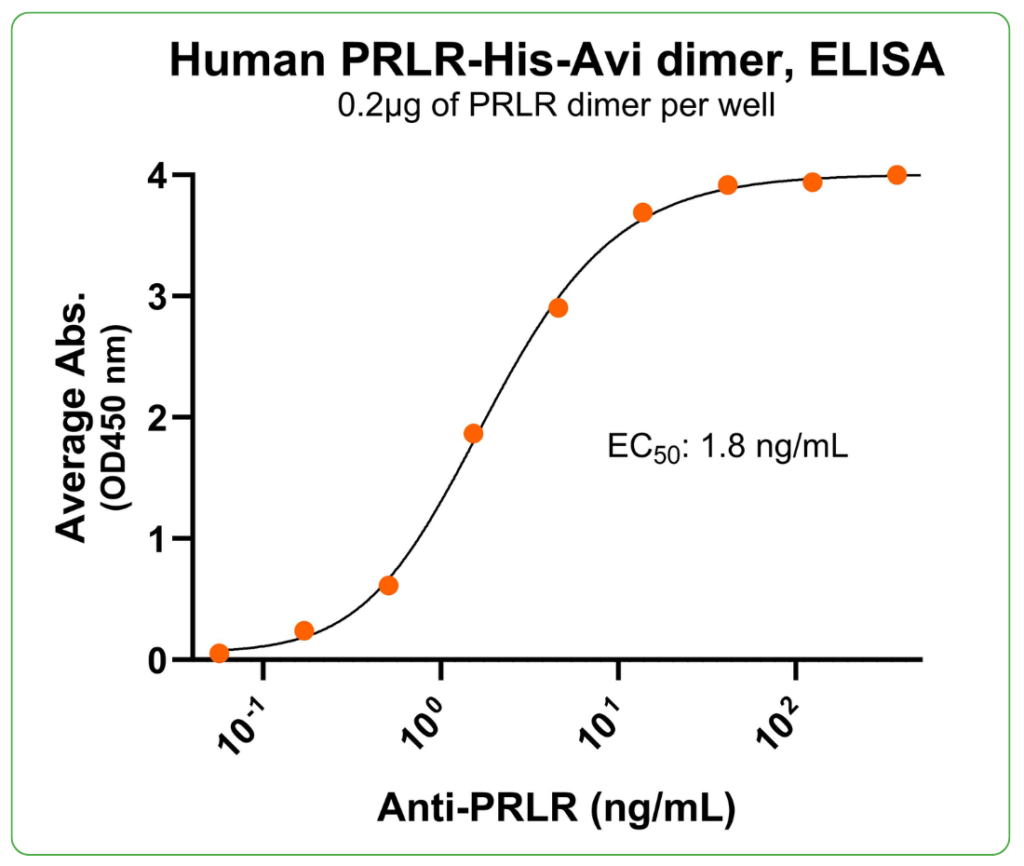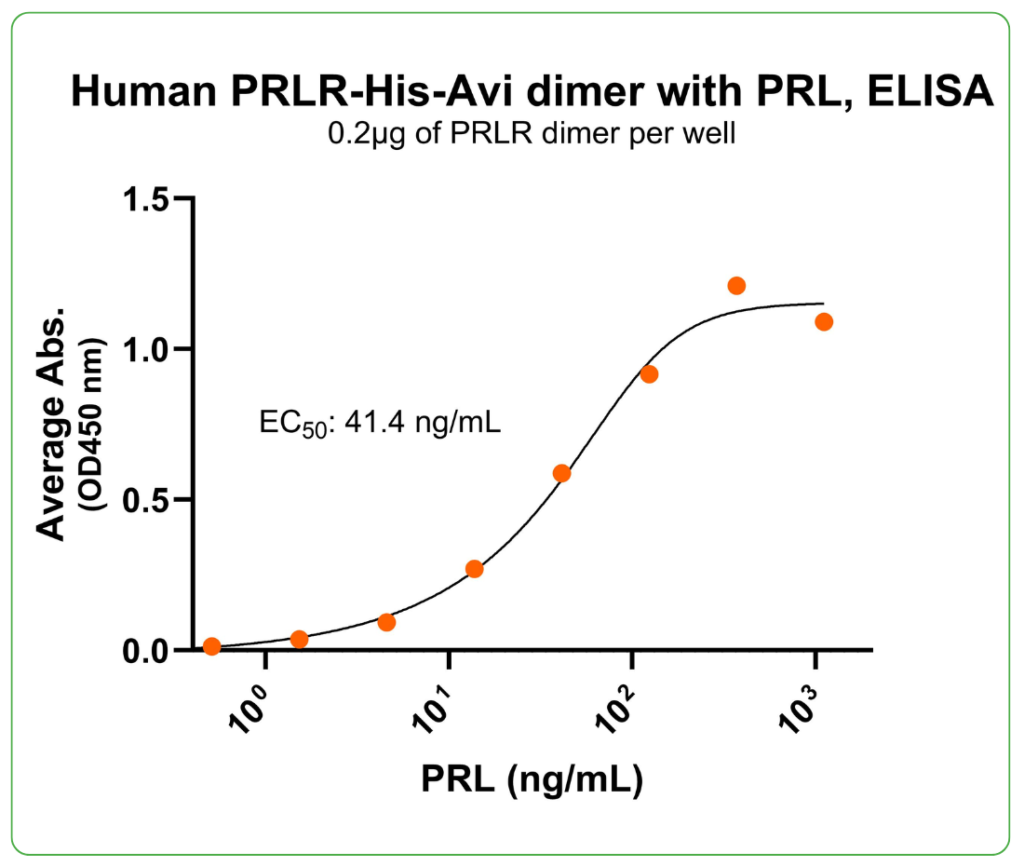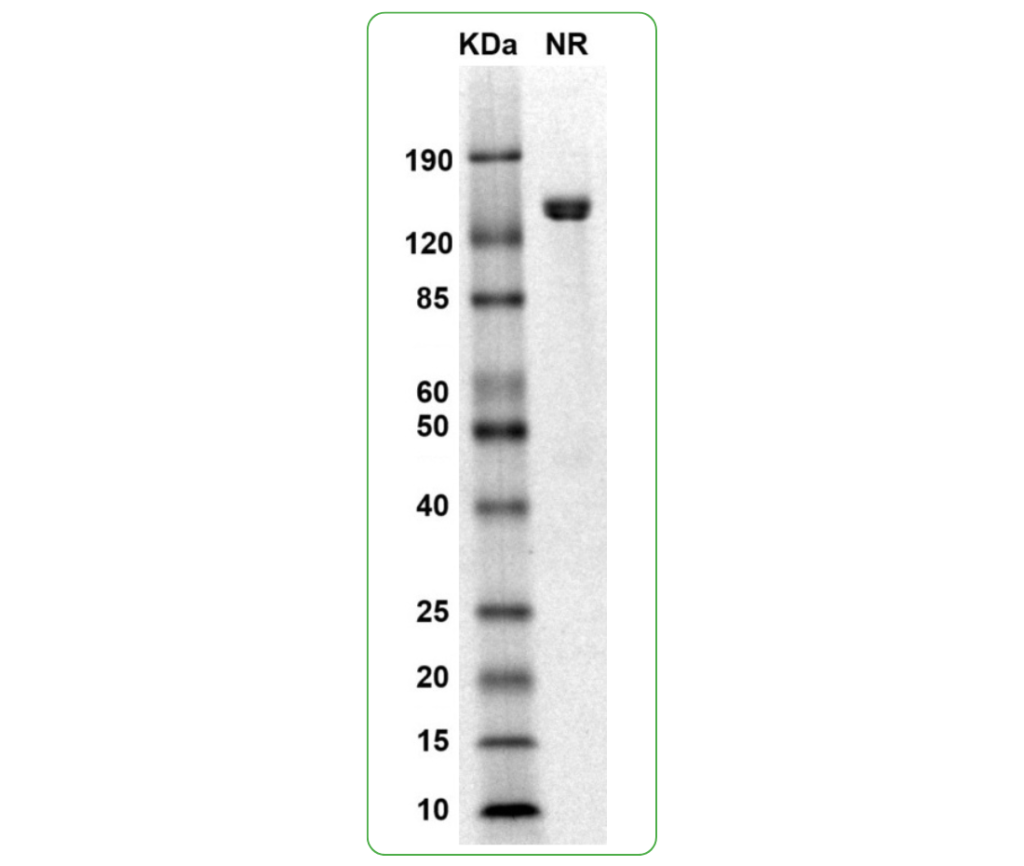Bioactive, Human PRLR Dimer, His-Avi Tag
| Product Code | CSP-24089 |
| Expression Host | HEK293T |
| Verified Applications | ELISA for PRLR-specific antibody and prolactin (PRL) ligand protein binding assays. |
| Suggested Applications | ELISA for PRLR-specific antibody and prolactin (PRL) ligand protein binding assays. SPR & BLI for PRLR-specific antibody and PRL protein binding assays. Animal immunization, RUO. |
| Purity | Greater than 90% dimer form as determined by SDS-PAGE under non-reducing condition |
| Amino Acid Range | Q25-D234 |
For Research Use Only (RUO)
Price: $125.00
Price: $195.00
Price: $350.00
Price: $750.00
Price: $2,500.00
Bioactivity – Antibody Binding
Immobilized human PRLR dimer protein, His-Avi tag (Cat. No. CSP-24089) at 2 μg/mL (100 μL/well) can bind anti-human PRLR monoclonal antibody, with half maximal effective concentration (EC50) range of 0.9-3.7 μg/mL (QC tested).
Bioactivity – Ligand Binding
Immobilized human PRLR dimer protein, His-Avi tag (Cat. No. CSP-24089) at 2 μg/mL (100 μL/well) can bind human PRL, with half maximal effective concentration (EC50) range of 20.7-82.8 ng/mL (QC tested).
Specifications
Formulation: 0.22μm filtered PBS, pH 7.4
Shipping: Frozen Dry Ice
Storage: -80°C
Human prolactin receptor (PRLR) is a class 1 cytokine receptor glycoprotein that can homodimerize. The recombinant PRLR dimer protein (CSP-24089) is a cis-homodimer (cis-dimer) and contains a PRLR extracellular domain (UniProt# P16471, amino acids Gln25-Asp234) fused with a proprietary dimer motif followed by a tandem His-Avi tag at the C-terminus. This dimeric protein is expressed in HEK293T cells. The recombinant human PRLR dimer protein is bioactive and can bind to prolactin (PRL). It also binds PRLR-specific antibodies. This PRLR dimer can be used as an antigen for in vitro assays and antibody screening, and as an immunogen for immunization to generate antibodies targeting more conformational epitopes.
Protein Name: PRLR
UniProt #: P16471
Predicted Molecular Weight: 69 kDa
SDS PAGE Molecular Weight: The migration range of the dimer protein with glycosylation under non-reducing condition is 120-190 kDa on SDS PAGE.
Protein Construct: PRLR dimer protein contains a PRLR extracellular domain (UniProt# P16471) fused with a proprietary dimer motif followed by a tandem His-Avi tag at the C-terminus.
Background
Human prolactin receptor (PRLR), also known as PRL-R, is a class 1 cytokine receptor glycoprotein that binds prolactin (PRL) as well as growth hormone (GH) and human placental lactogen (hPL). PRLR contains an extracellular domain with a cytokine homology module formed by two fibronectin type III domains, D1 and D2, followed by a transmembrane domain and cytoplasmic domain. PRLR is expressed on cells in mammary glands, pituitary gland, and other tissues. PRLR exists as a monomer and can form dimers. PRLR dimerization is a critical mechanism in PRL signaling, influencing numerous physiological and pathological processes. PRLR pathological dimerization, including constitutive or ligand-independent PRLR dimers sustain abnormal signaling, contributes to cancer, hyperprolactinemia, and immune dysfunction. Dysregulation of PRLR can promote tumor activity and positively regulate the proliferation of malignant cells in breast cancer. PRLR is an attractive therapeutic target for PRLR related diseases including breast cancer, hyperprolactinemia, and metabolic disorders. The recombinant dimeric protein mimicking the PRLR structural dynamics may offer better immunogen and antigen to develop precision-targeted therapeutics with fewer side effects.
Alternate Names: prolactin R, PRL-R



